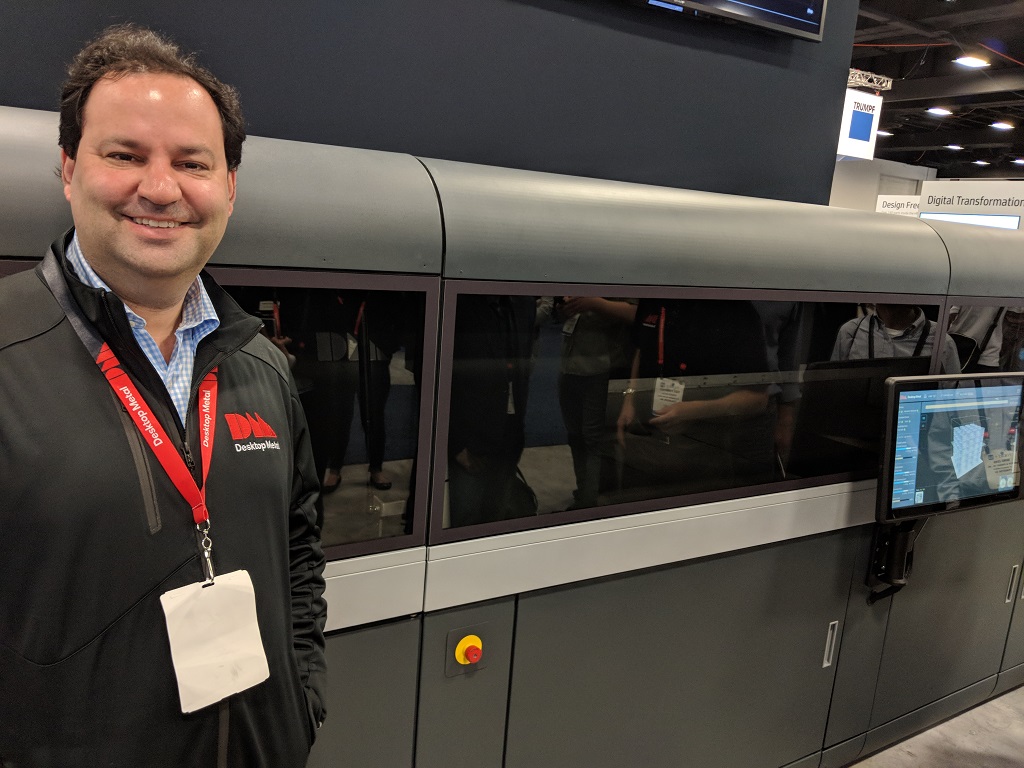
3D printing unicorn Desktop Metal announced today that it will go public by the end of this year; we catch up with the CEO to learn more about what that means for the company.
I spoke with Ric Fulop, CEO and Co-Founder of Desktop Metal, for a quick chat this busy day about what going public means for the future of the company — and where he sees that future fitting into the maturing additive manufacturing industry.
“I think we have a lot of work to do,” Fulop said in opening. “The exciting thing is what we’ll do over the next decade. Our industry is going through major expansion and growth, ramping up toward production.”
Before getting into that work, I wanted to start with the background on today’s announcement: Why go public?
For a variety of reasons, Fulop disclosed:
“It’s something that gives us the ability to recruit talent, and gives us the ability to acquisitive if we need to, more currency to dedicate to our future. It gives us more of an ability to invest in organic growth and supercharge our capabilities.”
Going public usually involves an Initial Public Offering (IPO), but Desktop Metal chose to go another route, working with Trine Acquisition Corp. Trine is a “blank check company” that enables going public through a special-purpose acquisition companies (SPAC) merger.
“It’s a different way to do it,” Fulop acknowledges, but one that’s becoming more common. “About one-third of companies going public in the last year have gone this way. If we weren’t in a pandemic, we may have done it the standard way [via IPO], but this was the best decision for us now. This is just a different approach to do it, and it’s worked out well for us.”
The one challenge of going SPAC versus IPO, he added, is finding the right fit company as a partner.
Trine, though, led by new Desktop Metal Board of Directors member Leo Hindery, Jr., proved to be that right fit. Fulop highlighted extreme confidence in Hindery and what he brings to the table: “Leo is a legend.”
“We had a number of alternatives, but we both saw a meeting of the minds when we looked at the options,” Fulop said. “We’re very excited to partner with them.”
And of course, along with that right partner fit comes the factor of the right timing. For additive manufacturing, that timing is now, as the technology is viable as a production suite for end-use products and is also seeing a pandemic-driven uptick in usage. The agility of 3D printing is able to more flexibly address disrupted supply chains, and industry is noticing.
This new heightened awareness is also building upon an already-growing industry, as the technology is entering what Desktop Metal is calling “Additive Manufacturing 2.0.”
“Our industry has had a high cycle focusing on jigs and fixtures, short-run production, things like that. The last time we had a big boom in 3D printing, it was primarily companies that are kind of the old guard that had started in the 1980s and 1990s, who were focused on prototyping, and jigs and fixtures. This Additive 2.0 phase is parts produced competitively versus other processes,” he continued. “Our Shop System competes with CNC; our Production System makes parts at scale. The industry is projected to grow from $12 billion to approximately $146 billion by the end of the decade; that’s a huge amount of shift from Additive 1.0 to Additive 2.0. We love doing these prototypes, but if it’s fast enough and cost-effective, we can go now to production.”
So, yes, it definitely sounds like a good time to jump on the opportunity to go public. So what else might that entail?
In the announcement issued this morning, I noted, there was an intriguing allusion to industry consolidation. What’s that all about?
“One of the things that was really attractive about being a public company is that you have the currency to add value to the industry. We’re going to look at that [M&A] selectively,” Fulop told me. “Our core focus is to grow our business in an organic way, but we will also look at other ways to grow, which are maybe inorganic. We have a lot of potential here. We have our existing suite of technologies, and then there’s also what comes after that.”
So, then, what comes after that?
It turns out that “now that we’re a public company, it’s harder to pre-announce stuff,” Fulop said. We can’t get too much of a preview now outside of what official announcements include, but for the rest of 2020 “you’re going to see lots of things we’re doing on the materials side and on the systems side.”
“All I can say is we’re working hard to change the way people make stuff,” Fulop added. “We’re making our customers successful, and that’s our core goal at the end of the day.”
We closed our chat out by looking to the farther future for the additive manufacturing industry overall.
“It’ll be very exciting over the next year; additive can let you do things you can’t do with other processes. In times like this, you need more flexibility,” he said.
“We have an industry growing at a compound annual rate of over 20%… This is going to be our decade, where it’s real. This technology will become like machining. I’m excited to go to an IMTS one day where there’s more additive than machining. I think it’ll happen sooner than we think it will.”
It’s looking to be a very bright future for Desktop Metal and for additive manufacturing, indeed.
Via Desktop Metal
